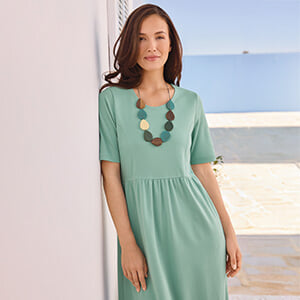Inspired by the rich hues of the autumnal palette, our rust-coloured pieces are the perfect addition to your wardrobe. Make sure you are ready for the coming season with our guide to all things rust.
Still feel that you cannot pull off these striking autumnal colours? Think again! Read our tips below on how to pull off rust with style:
Wear a neutral shade such as cream, white or black for a striking contrast, which will draw attention away from your face, if you are concerned about rust hues clashing with your skin tone.
Feeling more adventurous? Pair rusts with purple or navy.
Wearing lipstick with hints of orange will complement the rust colours in your outfit.
Keep reading for some interesting insights on this lovely seasonal colour.
How did the colour rust transform into the on-trend colour for this season? Our brief history below outlines the rise of rust:
The origins of the word rust (and russet) are derived from the Ancient Greek for red: erythrós, which led to the evolution of words such as russet, ruby, ruddy and rust. From this word we also have the term for red blood cells (erythrocytes) and in an abstract train of thought one could argue that rust is the lifeblood and, therefore, the essential colour of the season. Interestingly, the colour russet was not recorded until 1562, followed by rust more than a century later in 1692.
Russet originally started out life not as a colour but as a cloth. It was made of coarse wool and was only deemed fit for the poorer subsection of society, indeed, in 1363 a statute decreed the poor must wear russet or other cheap cloth. However, certain priests and those wishing to appear humble and virtuous adopted it as their cloth of choice. It was dyed with madder and woad to produce subdued greys and reddish-browns, hence, the colour. The cloth was dyed in dye baths and the first cloth to be dyed would be very bright in colour and more expensive to produce and thus favoured by the rich. The dye bath was then reused to dye several more batches of cloth, each batch consequently becoming duller in shade and cheaper (of course, nowadays, dyes are specifically manufactured in specific colours, so more muted shades are certainly not just for the less well-off).
Moving onto relatively more modern times, rust became popular in the 1930s, with revivals in the 1970s and 1990s. Today it is the on-trend colour for Autumn/Winter 2016. The sophisticated palette will keep you looking fashionably colourful, whilst avoiding garish, bright tones.
We hope this has left you feeling ready for rust!


